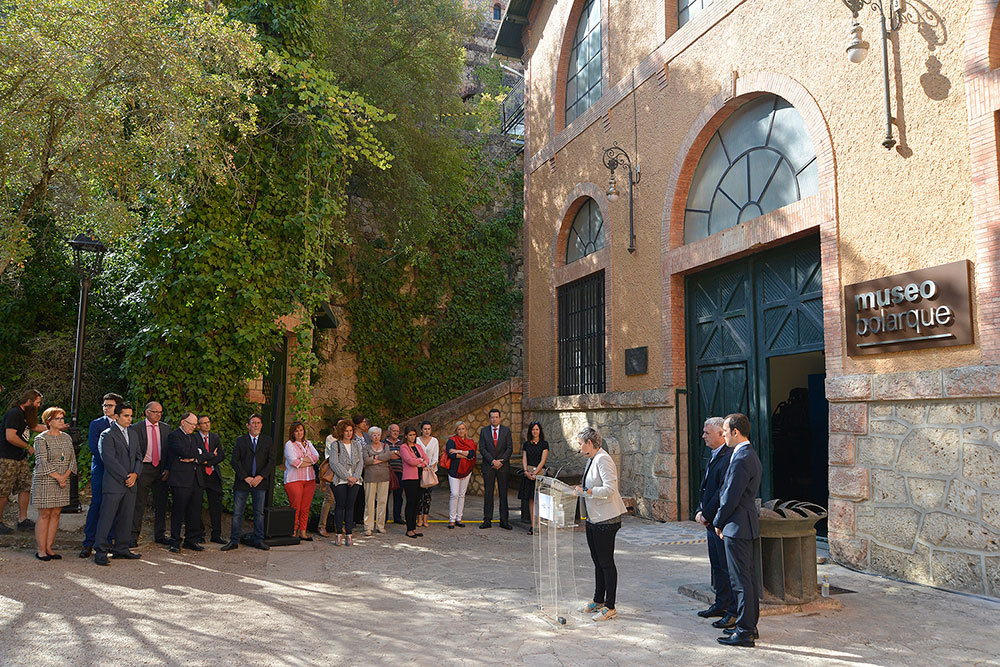The Gas Natural Fenosa Foundation reopens the Bolarque Museum, which presents a journey through the history of energy in Spain
The Gas Natural Fenosa Foundation has carried out works and refurbished the Bolarque museum, located in the machine room of the Bolarque plant in Almonacid de Zorita (Guadalajara).
The aim of the facility is to revitalise the area through culture and an educational programme for schools.
The Foundation will throw a party tomorrow, 23 September at 12 pm, to celebrate the reopening to the public.

The Bolarque Museum of the Gas Natural Fenosa Foundation has reopened its doors today in an event attended by José Luis Vega, Provincial Director of Social Welfare; Eva Buch, Museum Director, and Alfonso J. de la Rosa, Operation and Maintenance manager of Gas Natural Fenosa’s hydropower plant, as well as mayors and leading figures within the area of influence of the Bolarque plant in Almonacid de Zorita (Guadalajara).
Since taking over the Bolarque Museum's management in 2016, the Gas Natural Fenosa Foundation has carried out maintenance works at the facility, making it accessible to people with reduced mobility and improving it with a classroom, as well as other services. “The cultural facility's aim is to revitalise the area through culture and an educational programme for schools,” explained Eva Buch, Museum Director, who added “the Bolarque Museum is organising a celebration tomorrow, 23 September at 12 pm, to raise awareness about what it has to offer. It will be open to the public and include free activities.”
Attendees at the opening event were able to visit the facility following the works carried out by the Foundation, which did not only affect the main building and the hydropower plant’s machine room inaugurated in 1910, but also the inside, as a thorough renewal of its contents was undergone. “The works have enabled us to define a discourse and a graphic and visual journey throughout the history of electricity in the country, by modernising certain pre-existing features, reorganising the layout of objects and implementing new areas and spaces,” said Eva Buch.
The permanent exhibition at the Bolarque Museum has been organised in two main areas: the technological and industrial Bolarque —on the ground floor—, and the human and social Bolarque, on the upper floor. Under request, the visit allows access to the Bolarque hydropower plant in full operation. On the ground floor, visitors can see closely and learn about the elements that directly influence electricity generation; the company’s milestones over more than a century; the history of the place and its technological evolution with the construction of the plants Bolarque I (1954), Bolarque II (1974) and Los Molinos (2010), where the tour ends.
The second floor shows visitors the lives of those who worked at the plant and their families, who made Bolarque a vibrant town full of life. The company was responsible for providing optimum living conditions for a highly-qualified workforce. The school, hotel, commissary, cinema, swimming pool and sports installations, together with the possibility of having a home, created a true town around electricity production.
Educational activities programme at the Bolarque Museum
The cultural facility offers educational activities on energy and technology for primary and secondary school students. The workshops present the essential tools for students to learn the secrets of energy in a dynamic, participative and contextualised way. In its first year of activities for schools, during the 2016/2017 school year, the Bolarque Museum received over 5,680 visits from school students.
About Bolarque
The Salto de Bolarque has generated power for over 100 years. At the time, it was an important landmark in the electrification of Spain, as it was here, in 1910, that the first large hydropower plant was built to supply the city of Madrid. It is an enclave where water has been a very important element. There are documents from the12th century that testify to the conflicts between the town of Almonacid de Zorita and the Military Order of Calatrava to control the water mill that existed there at the time.
Find out more at https://www.fundacionnaturgy.org/museo-bolarque/.
Share